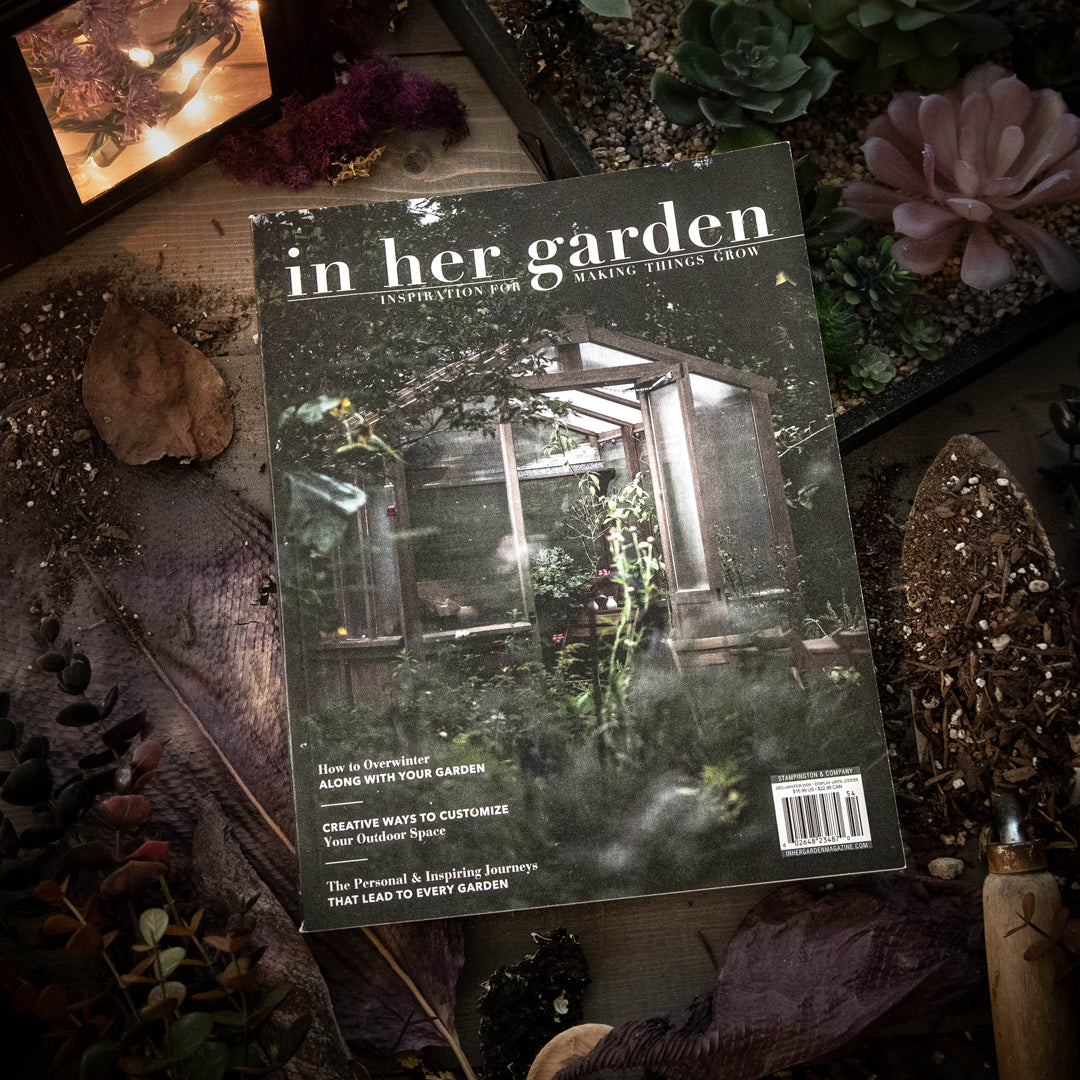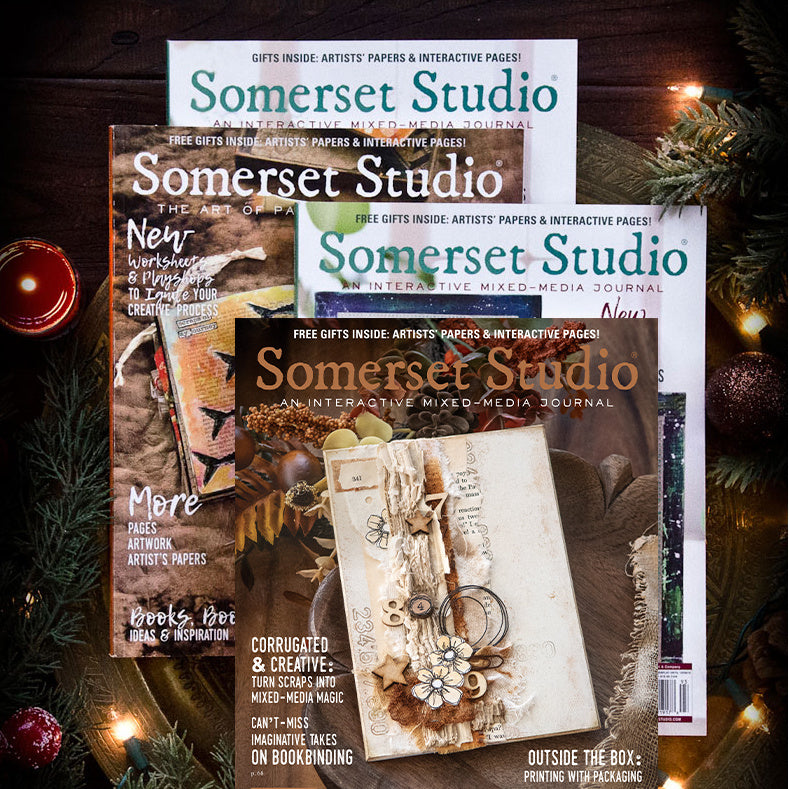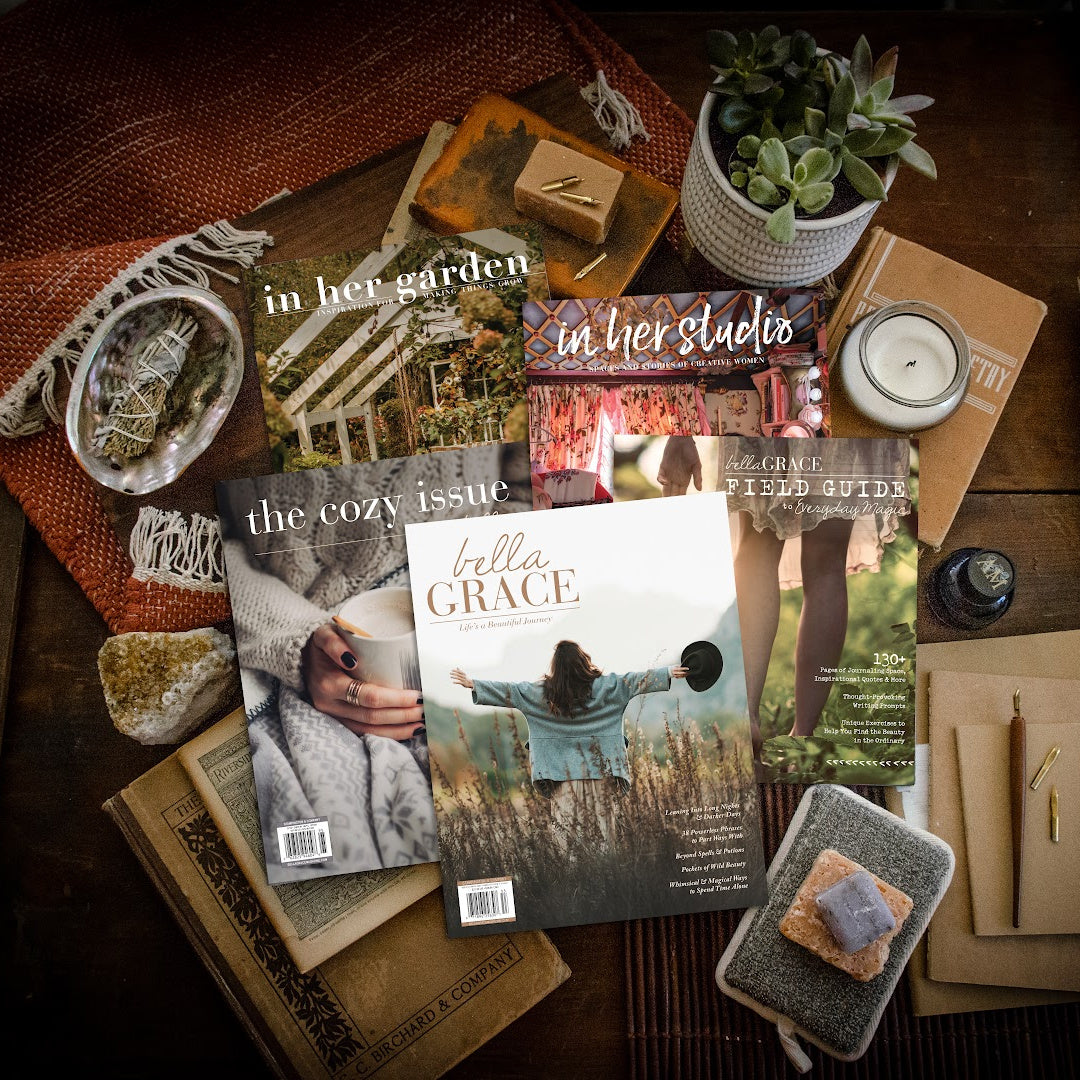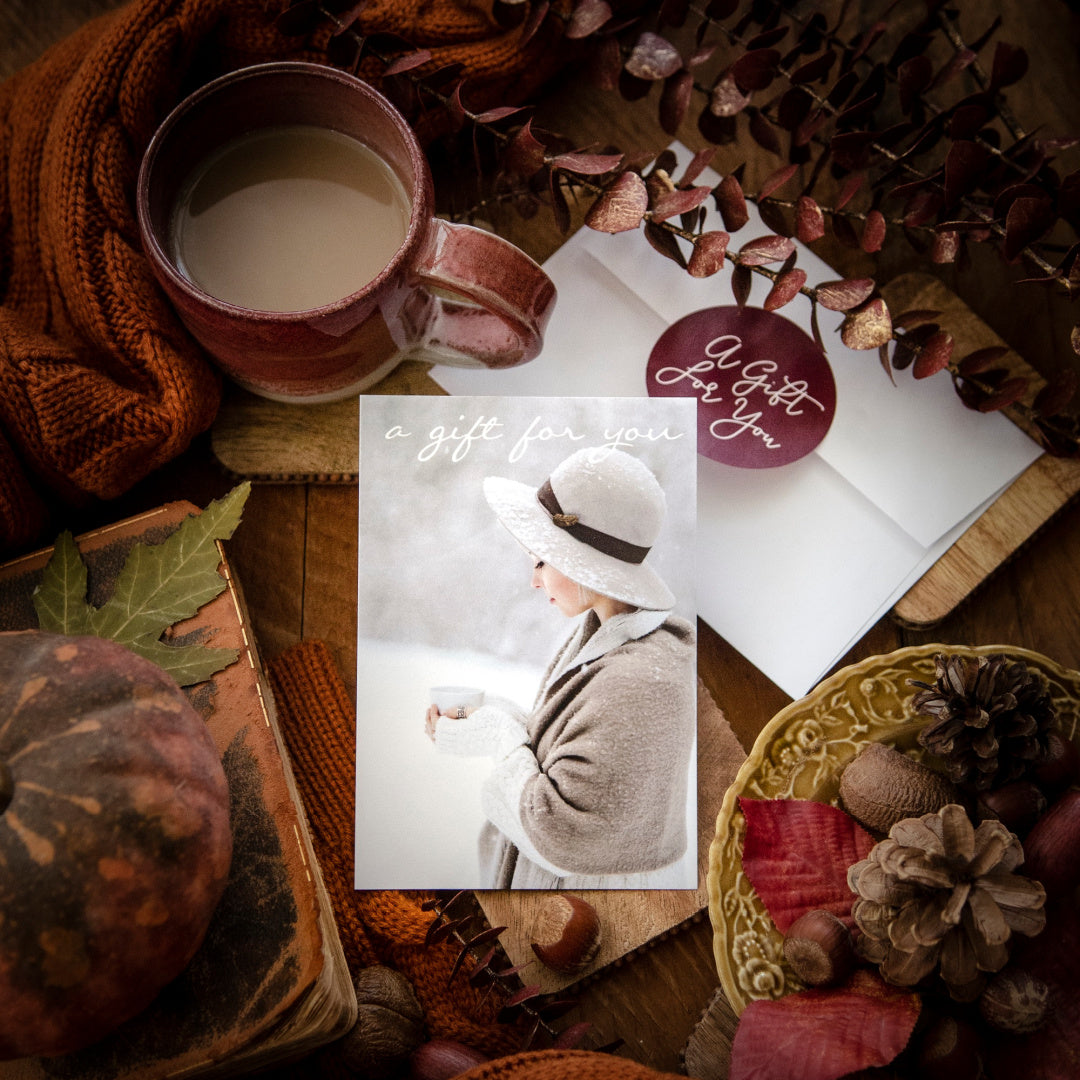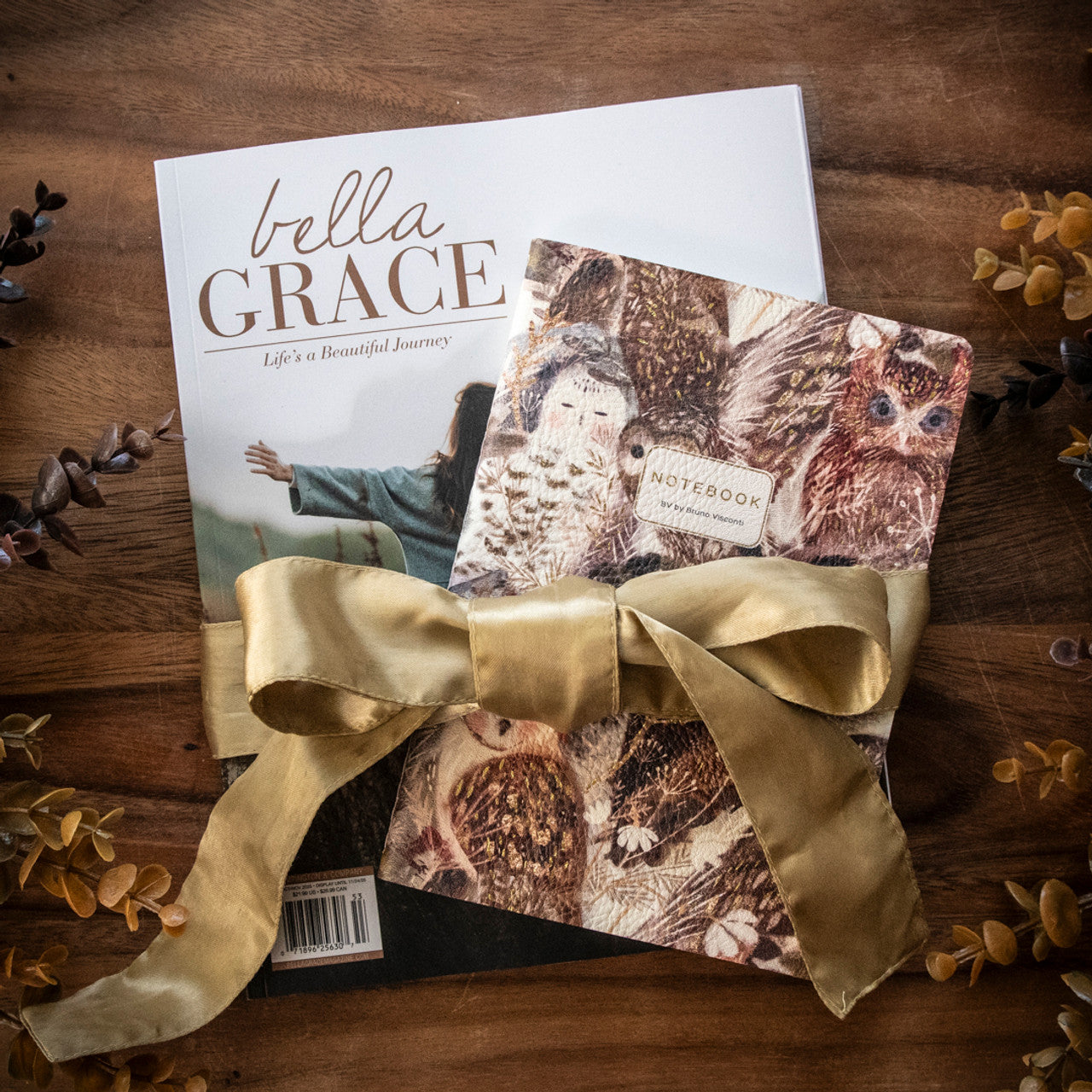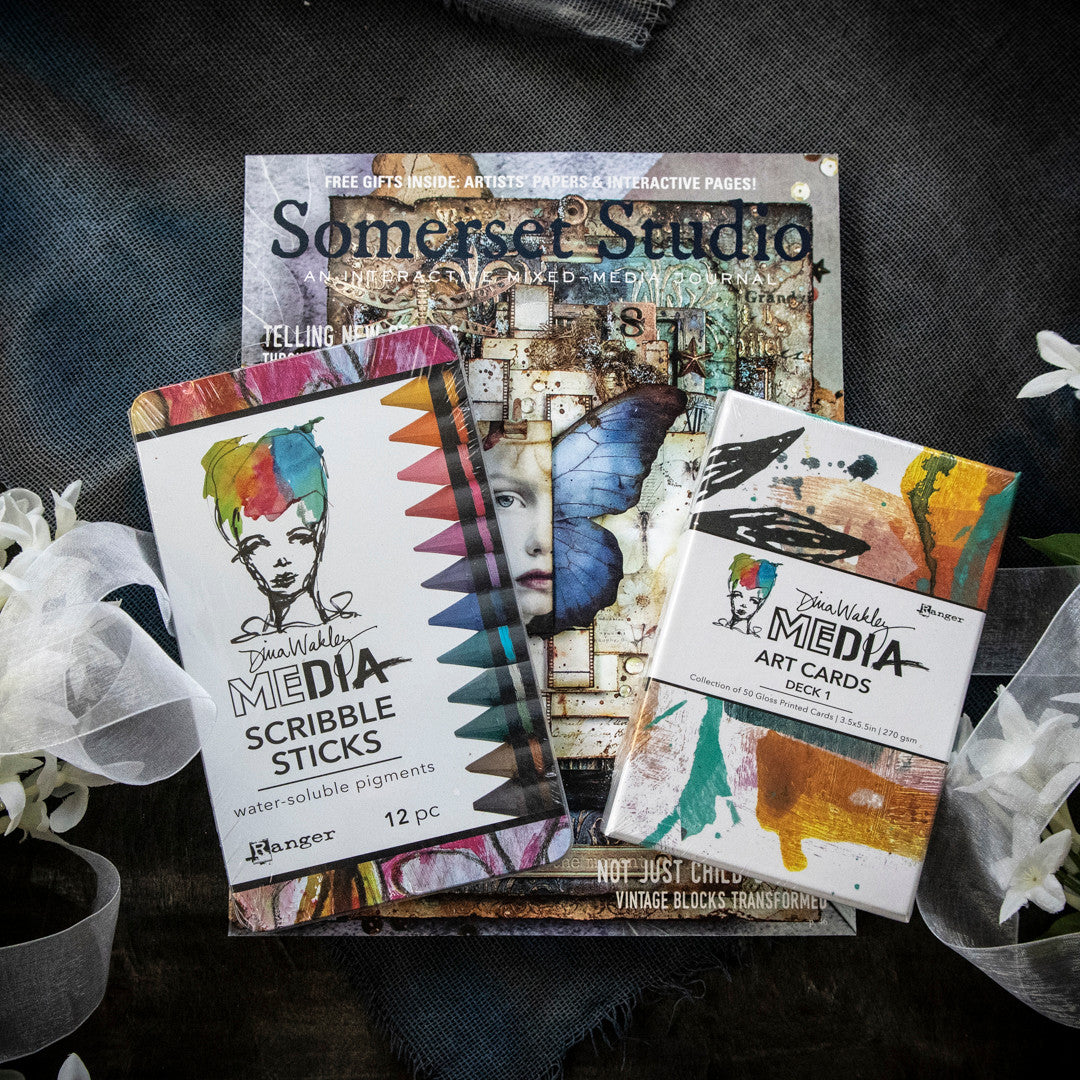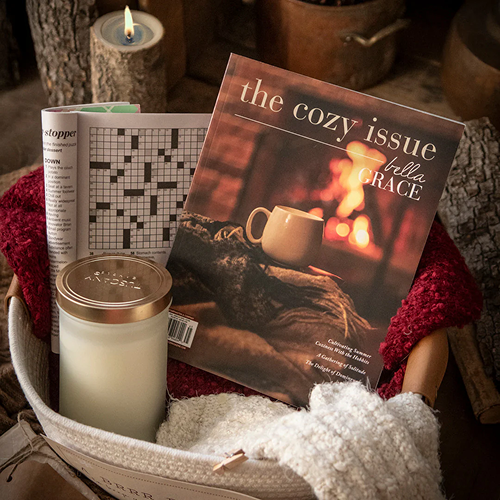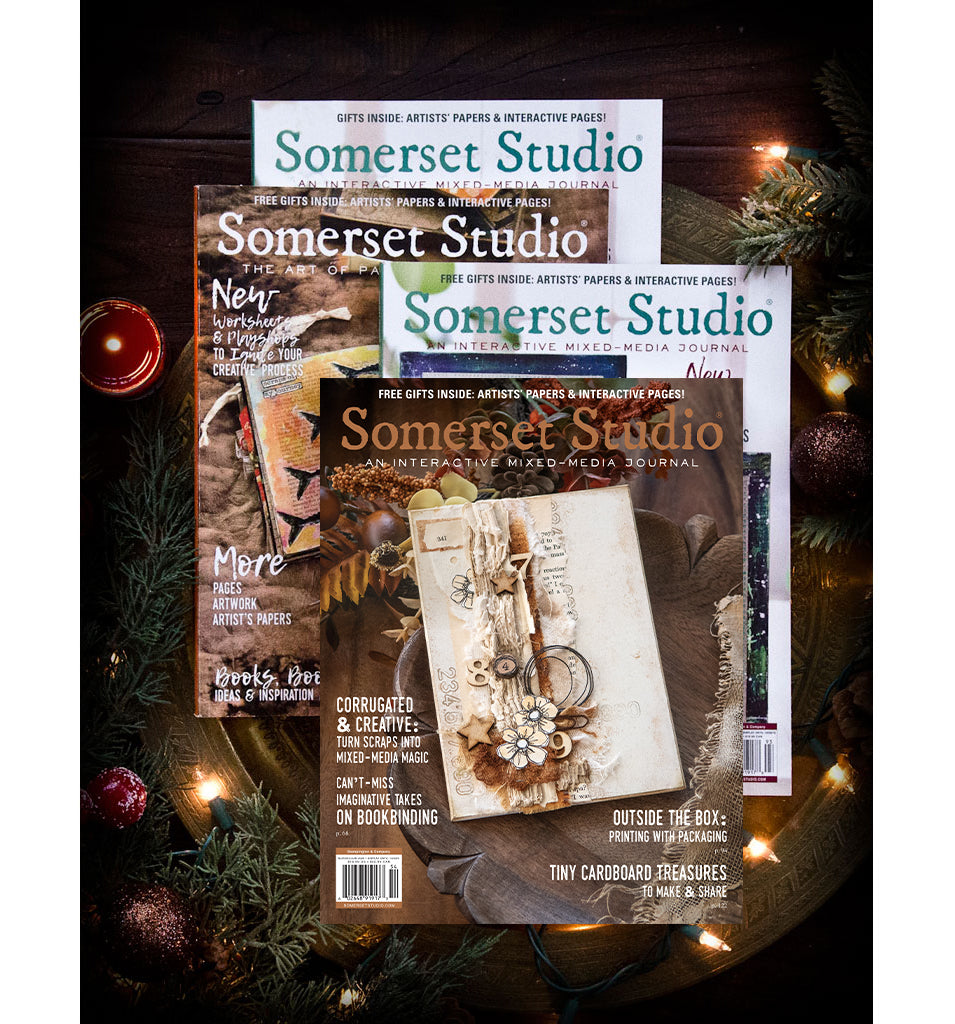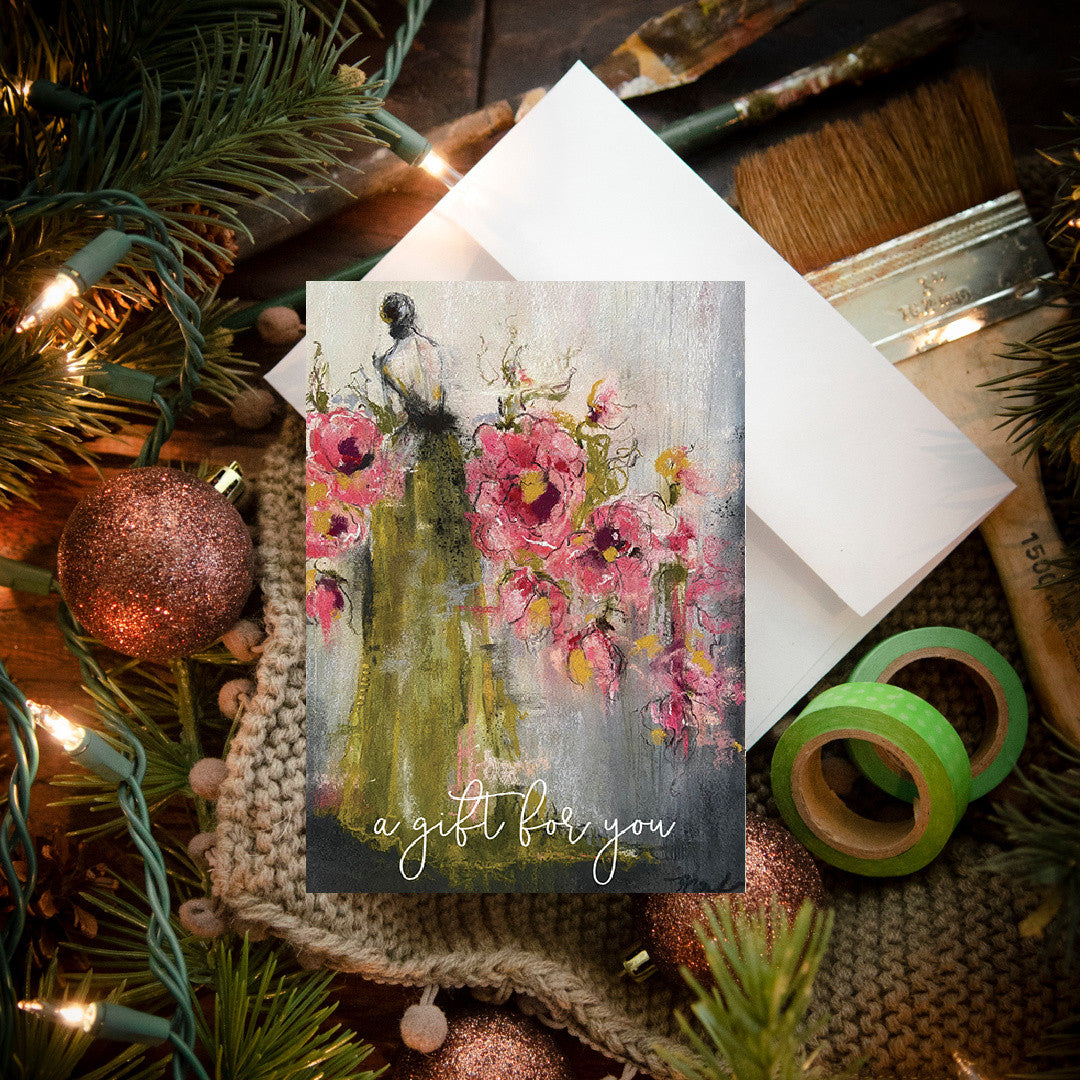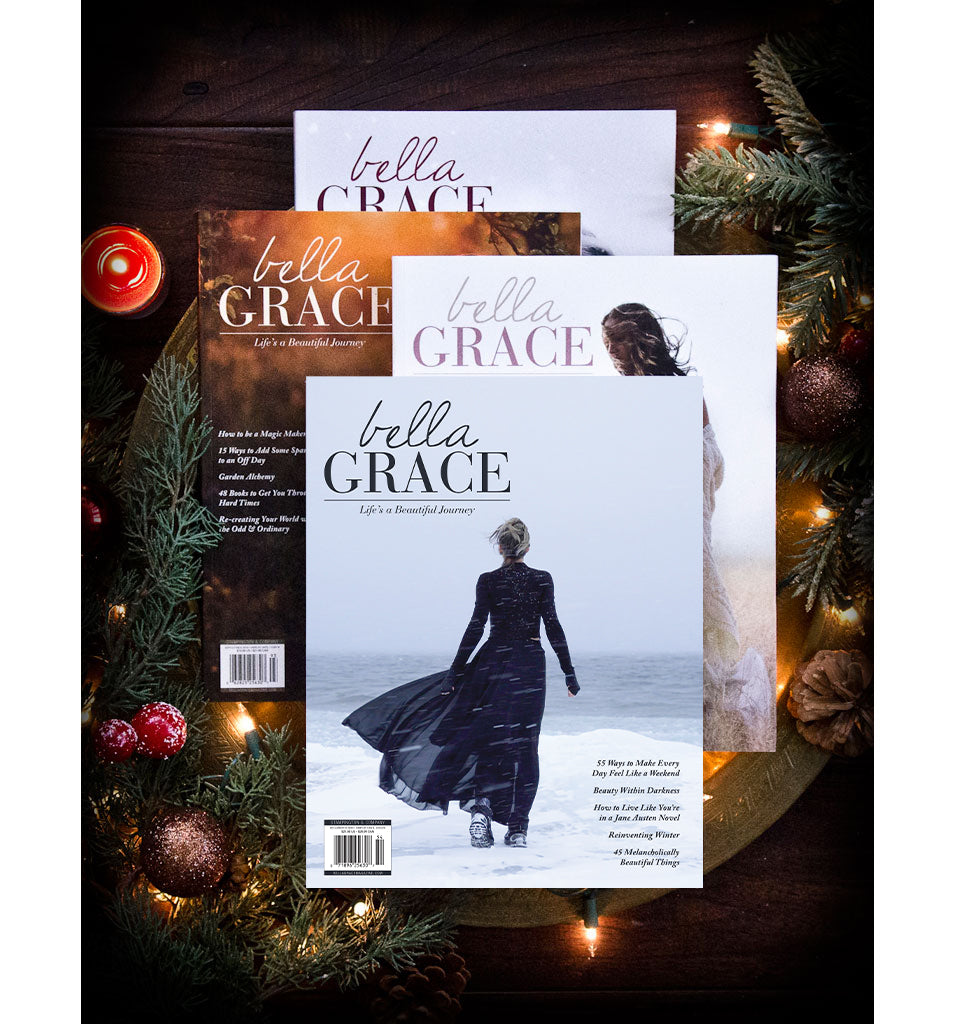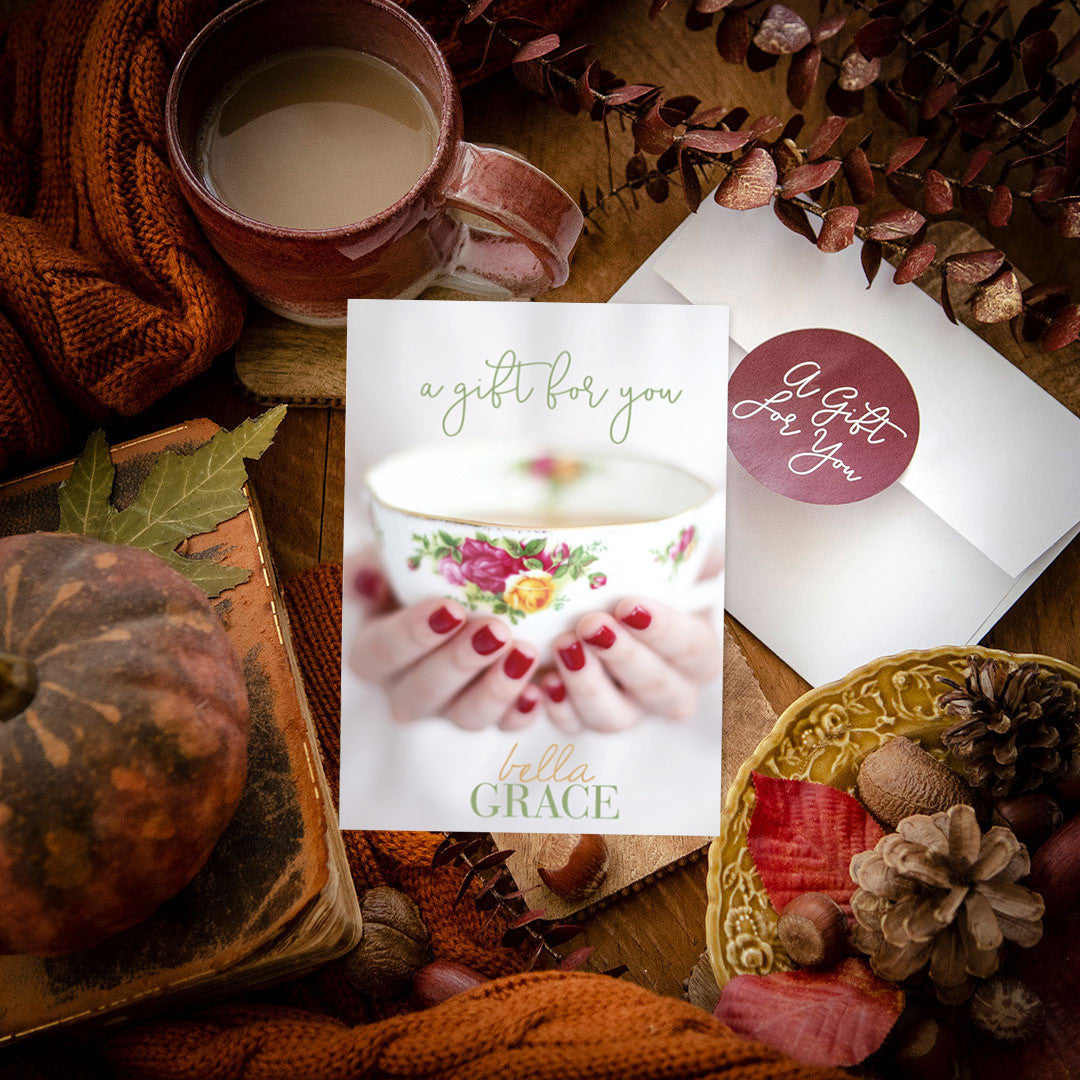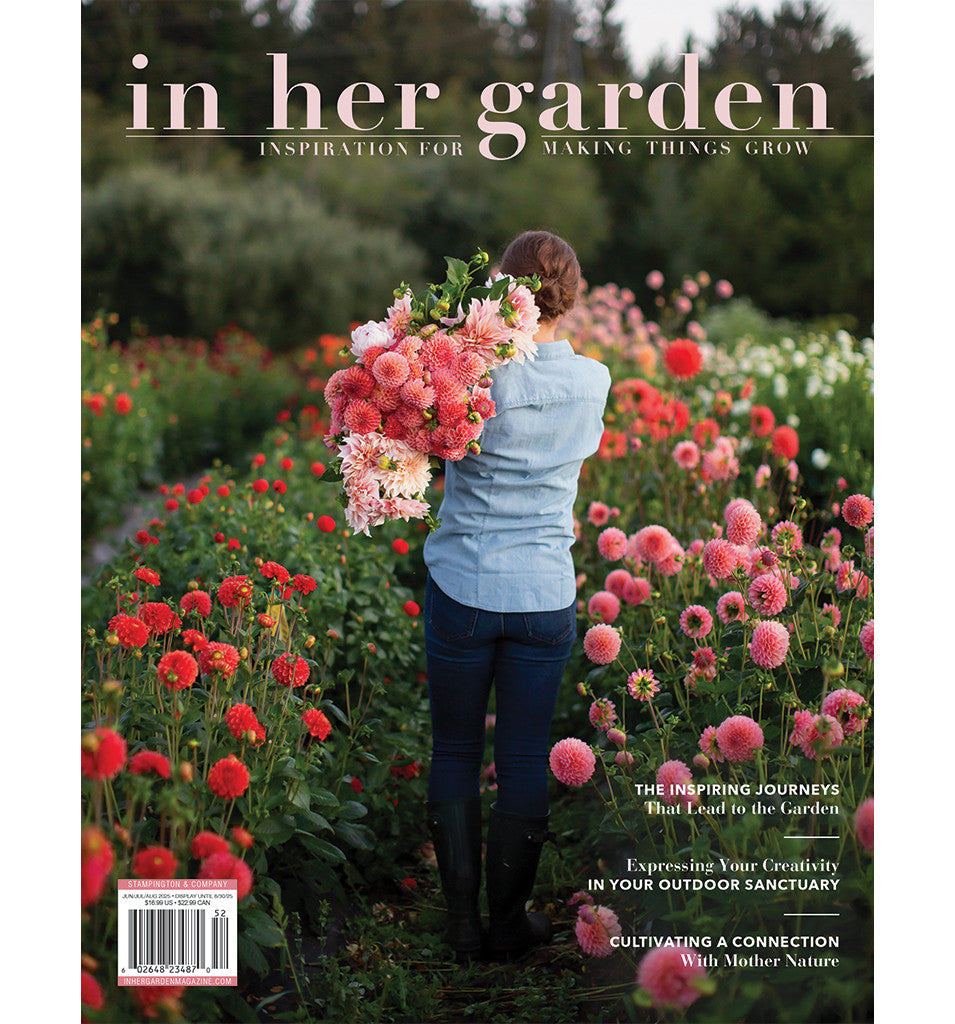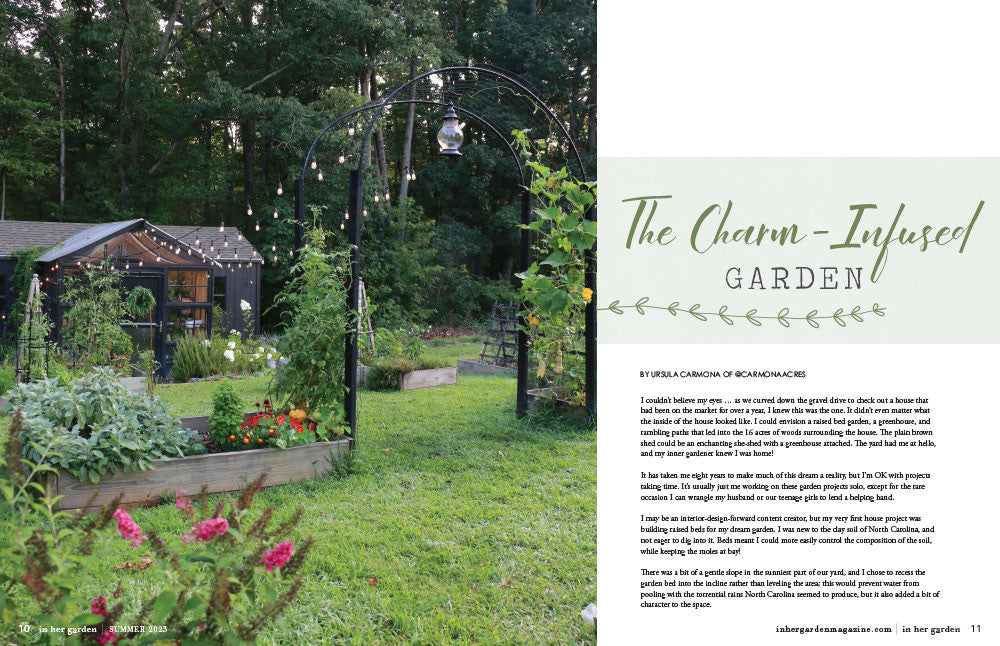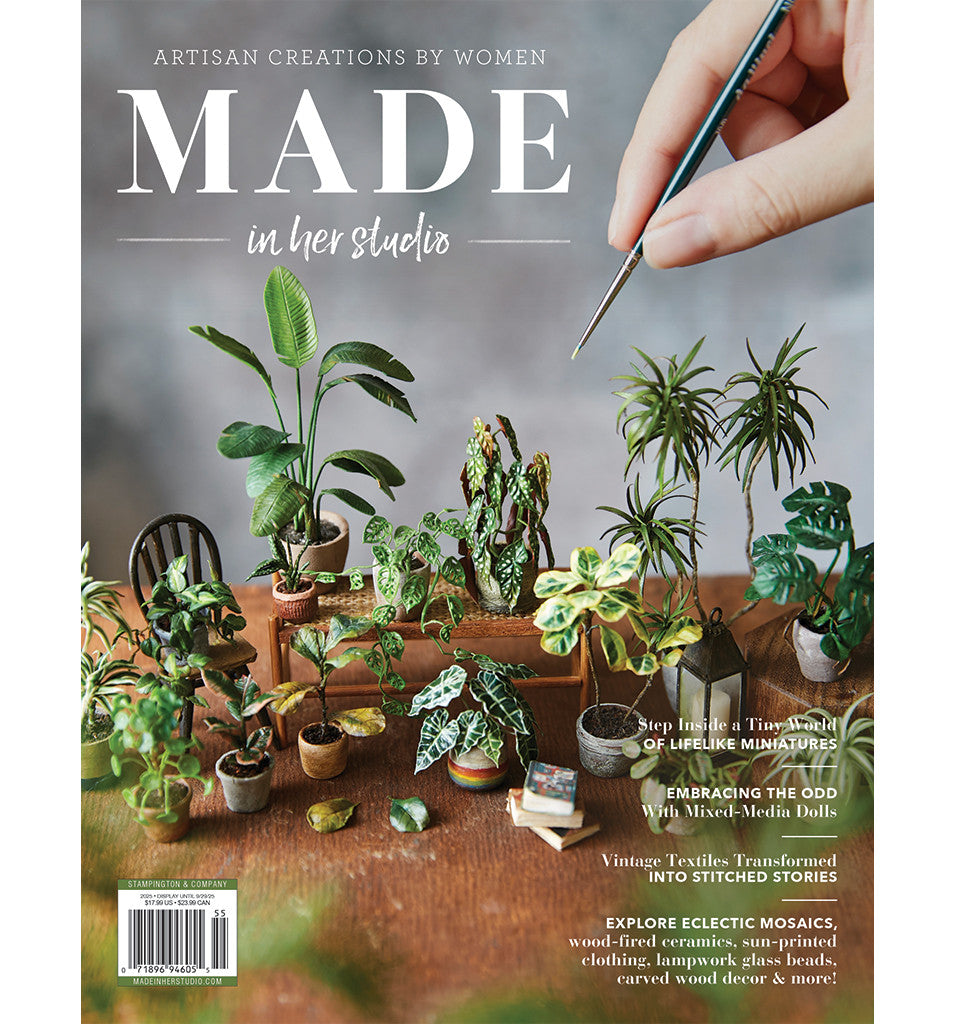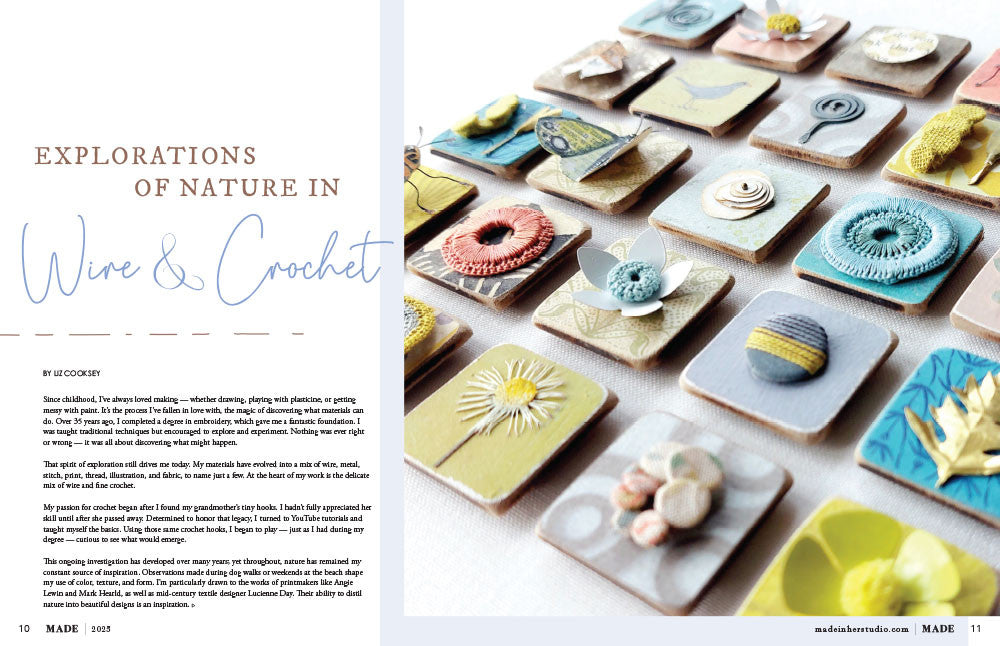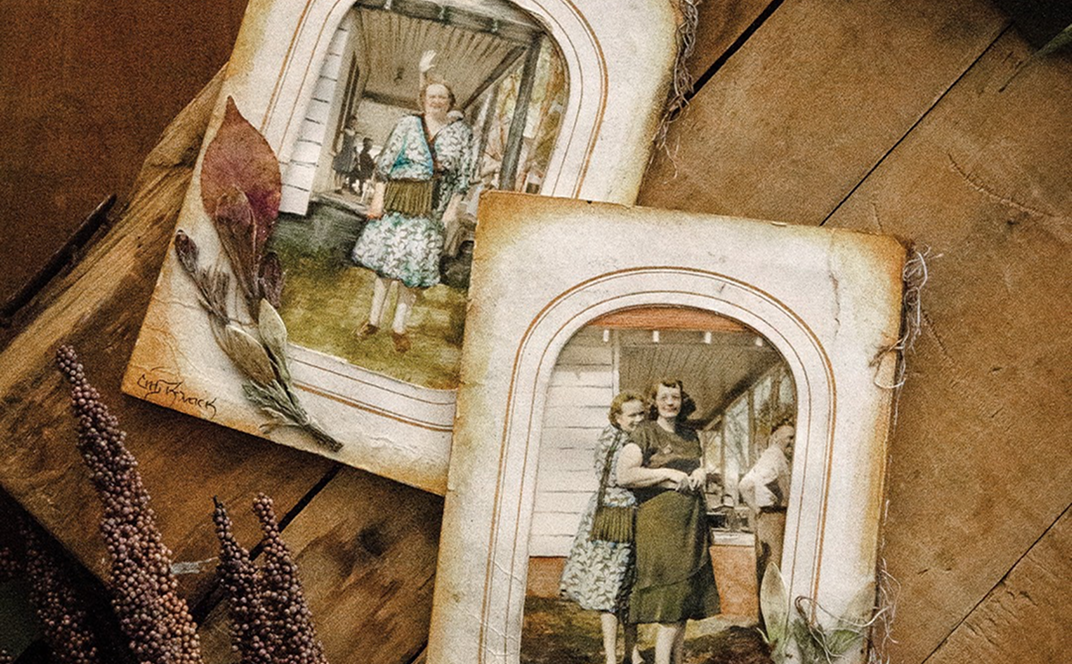Artful Building Blocks: 8 Mixed-Media Techniques for Beginners
Somerset Apprentice magazine takes its readers by the hand to teach them the fundamentals of creating Somerset-style art — one basic step at a time. Today, we’re sharing some of our very favorite projects from the Artful Building Blocks department which can be found inside every issue of Somerset Apprentice.
We hope these quick tutorials give you a few more “tools” to keep under your artistic belt and help to inspire your next creation!
If you’d like to learn even more tips and techniques, including layered collage, mixed-media, and assemblage art, be sure to pick up a copy of Somerset Apprentice magazine to add to your resource library.
Check out our amazing deals on back issues, starting from only $6.99. View Back Issues >>
1. Crayon Splattered Tree
by Meghan Horan; Originally featured in Somerset Apprentice Spring 2014

Click on any image to enlarge. Click once more to minimize.
Tips
- Only touch the tip of the crayon long enough to coat the metal tip of the hot glue gun. Too much liquid crayon can leave large splatters.
- Start with a darker crayon first and work up to the lighter colors. You can always repeat the same colors.
- Make sure to build up enough color to fill in the white space inside the tree leaves.
- Use brushes in Photoshop to help embellish artwork and clean up unwanted splatters.






Directions:
- Gather all your supplies.
- Draw a tree with a pencil and fill in with watercolor pencils, leaving heavy brushstrokes for the tree bark.
- Use water and a watercolor brush to blend pencil.
- Use a hot glue gun and crayons to splatter, using a flick of the wrist or a gentle tapping motion on the side of the gun.
- Repeat with various colored crayons.
- Finish your art with a title and embellishments.
2. Textured Cardboard Rolling Pin
Artwork by Christine Stephens; Originally featured in Somerset Apprentice Spring 2014

Click on any image to enlarge. Click once more to minimize.
Tips
- Use technique on any substrate: fabric, cardstock, manila folders, tags, etc.
- Be creative with your design.
- Cardboard rolls are sturdier than using toilet paper or paper towel rolls. If using other rolls, make sure to stuff them with bubble wrap or paper so they don't collapse as you roll on your substrate.






Directions:
- Gather all your supplies.
- Draw pattern on cardboard roll with hot glue, and let dry.
- Randomly splatter drops of paint onto journal.
- Spread paint around the journal with a brayer.
- Squeeze paint onto paper plate/palette. Add paint onto cardboard roll with a foam brushs.
- Roll onto Journal. Repeat as necessary.
3. Rubber Cement Resist Background
Artwork by Jana Holstein; Originally featured in Somerset Apprentice Spring 2014

Click on any image to enlarge. Click once more to minimize.
Tips
- Create designs, write words, make random drizzles or whatever you want with the rubber cement to create interest.
- Cover a stamp with rubber cement and stamp it on, let dry, and then paint over it. Make sure to thoroughly clean the stamp afterwards
- Rubber cement has a strong odor, so you might want to open the windows when you do this project.






Directions:
- Gather all your supplies.
- Drizzle the rubber cement onto the watercolor paper. Let dry until tacky — about 10 minutes.
- Paint over rubber cement with watercolor paint. Let dry completely.
- Use your fingers to rub off the rubber cement to reveal the white background.
- Use a glue stick to adhere the number "3" card in the middle of the page. Stamp stitches around the perimeter of the card.
- Adhere three word stickers to the bottom of the page.
4. So Simple Handmade Stamps
Artwork by Christen Olivarez; Originally featured in Somerset Apprentice Spring 2014

Click on any image to enlarge. Click once more to minimize.






Directions:
- Gather all your supplies.
- Apply a thick layer of rubber cement on your cardboard scrap. Place found objects in a pleasing pattern on the wet rubber cement. Let dry.
- Make a variety of stamps using different found objects.
- Dip "stamp" into acrylic paint.
- Stamp design onto cardstock.
5. Crayon Resist Background
Artwork by Julie Fei-Fan Balzer; Originally featured in Somerset Apprentice Autumn 2013

Click on any image to enlarge. Click once more to minimize.
Tips
- Create designs, write words, make random drizzles or whatever you want with the rubber cement to create interest.
- Cover a stamp with rubber cement and stamp it on, let dry, and then paint over it. Make sure to thoroughly clean the stamp afterwards
- Rubber cement has a strong odor, so you might want to open the windows when you do this project.






Directions:
- Gather all your supplies.
- Scribble across the page with the white crayon and then start to apply watercolor paint.
- Continue adding other colors to bring out your design — you can see that the crayon resists the watercolor paint.
- Finish out your background until you're happy with it.
- Layer elements and a photograph onto your crayon resist background.
- Finish your art with a title and journaling.
6. Bleeding Tissue Paper Background
Artwork by Meghan Horan; Originally featured in Somerset Apprentice Autumn 2013

Click on any image to enlarge. Click once more to minimize.
Tips
- When layering tissue paper onto the wet watercolor paper, don't smooth it out — scrunch it up so it has wrinkles. This will help create an interesting look.
- As you layer the tissue paper down, continue wetting the watercolor paper as necessary so the tissue paper sticks.
- Save the tissue paper that you peel off the watercolor paper — you can incorporate it into a future project!






Directions:
- Gather all of your supplies.
- Tear the tissue paper into small pieces and have ready to use. Dip paintbrush in water and wet the watercolor paper.
- Layer the wet paper with different colors of the bleeding tissue paper, arranging in a pleasing manner. Crinkle paper to add more wrinkles
- Continue with more layers in the same manner, dabbing with water to keep the watercolor paper moist. Useing a darker color around the perimeter to create a border will let the darker color drain into the wrinkles giving more color.
- Squeeze a wad of wet tissue paper onto your design to create water spots for added interest.
- Let dry completely and then carefully peel off paper, it will come off.
- Finish artwork with stamp.
7. Inktense Pencil Background
Artwork by Christen Olivarez; Originally featured in Somerset Apprentice Autumn 2013

Click on any image to enlarge. Click once more to minimize.
Tips
- Use a heat gun to speed up drying time.
- Stamp your design onto scrap paper before applying it to your art. It will prevent the color from puddling.






Directions:
- Gather all your supplies.
- Randomly color your paper with a light color of pencil, leaving some blank spots.
- Use a paintbrush that's been dipped in water to "activate" the color. Spread color all over your paper. Let dry.
- Repeat this with different colors until you've reached the desired effect.
- Apply water to your rubber stamp. Rub Inktense block on stamp to transfer color.
- Working quickly and randomly, apply stamp to paper.
8. Creating a Brushless Background
Artwork by Jennifer Taylor Originally featured in Somerset Apprentice Autumn 2013

Click on any image to enlarge. Click once more to minimize.
Tips
- Be sure to allow each layer of paint to completely dry before applying more.
- Using too much paint at one time will create a smooth texture, so be sure not to go overboard with the amount of paint you use — remember, the objective is to create texture.






Directions:
- Gather all your supplies.
- Squirt some black acrylic paint on your wood and rub in with your finger to create some tooth. Let dry.
- Squirt blue paints in various shades onto the black and use a brayer to move around, adding interest and texture.
- Continue to add more layers of paint with the brayer.
- Dip the edge of an old credit card in a contrasting color and scrape the paint onto the previously brayered background.
- Add additional texture by dabbing another contrasting color of paint through a piece of mesh onto the wood. Let dry and complete by painting your main subject.
Ready to soak in even more mixed-media inspiration?
Peek inside Somerset Apprentice magazine, and reserve your copies directly from our website.


